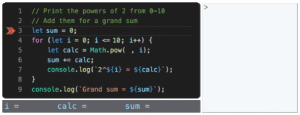Python Variables Explained
In this post, we cover what variables are in Python, how to use them, and explore various data types. We’ll look into the syntax for creating variables, naming conventions, and see some examples that illustrate how variables work.
What is a Variable in Python?
Variables are like storage boxes in your computer’s memory where you can keep information to use later in your program. Each variable is a named reference to a piece of data, allowing you to manipulate and manage it more easily.
Here’s a simple example of how to create a variable in Python:
1
name = "Your Name"
In the above code:
nameis the variable that stores the value “Your Name”.- You can update the value of
namelater in your code, like so:
1
name = "Another Name"
Python distinguishes between lowercase and uppercase, meaning name and Name would be treated as two different variables.
Types of Variables in Python
Python supports several types of data that can be stored in variables:
- Integer (int): Numbers without a decimal point.
1
num_int = 10 # This is an integer
- Floating-point number (float): Numbers with a decimal point.
1
num_float = 10.5 # This is a float
- String (str): Text values enclosed in quotes.
1
greeting = "Hello World" # This is a string
- Boolean (bool): Represents
TrueorFalse.1
is_valid = True # This is a boolean
- List: A collection of items, which can be of mixed types.
1
fruits = ["apple", "banana", "cherry"] # This is a list
- Tuple: Similar to lists but immutable (cannot be modified).
1
coordinates = (10.0, 20.0) # This is a tuple
- Set: An unordered collection of unique elements.
1
unique_numbers = {1, 2, 3} # This is a set
- Dictionary (dict): Key-value pairs, similar to a real-life dictionary.
1
person = {"name": "John", "age": 30} # This is a dictionary
Naming Variables in Python
- Variables can start with a letter or an underscore (
_), but not with a number. - They can contain letters, numbers, and underscores.
- Variable names are case-sensitive.
name,Name, andNAMEare different variables.
Best Practices for Naming Variables
- Use descriptive names for better code readability.
1
total_amount = 1500
- Use snake_case to separate words.
1
user_age = 25
- Constants should be written in all uppercase to indicate that their value should not change.
1
PI = 3.14159
Examples of Variables in Action
Here are some examples of defining and updating variables:
1
2
3
4
5
6
7
8
9
10
11
# Define an integer variable
count = 10
print(count) # Output: 10
# Change the value of the variable
count = 20
print(count) # Output: 20
# Define a constant
MAX_LIMIT = 100
print(MAX_LIMIT) # Output: 100
In the above code, we see how variables can be reassigned to different values. For constants like MAX_LIMIT, the convention is to not change them throughout the code.
More Information
Understanding variables is the foundation of Python programming. They are essential in almost every program you write. For more in-depth learning, you can explore the official Python Documentation on Variables.
Here are some additional resources for learning about Python variables:
Next Steps: In the next post, we’ll explore Aritmetic Operators. You’ll learn the best practices and common pitfalls to avoid. Keep learning and happy coding!
